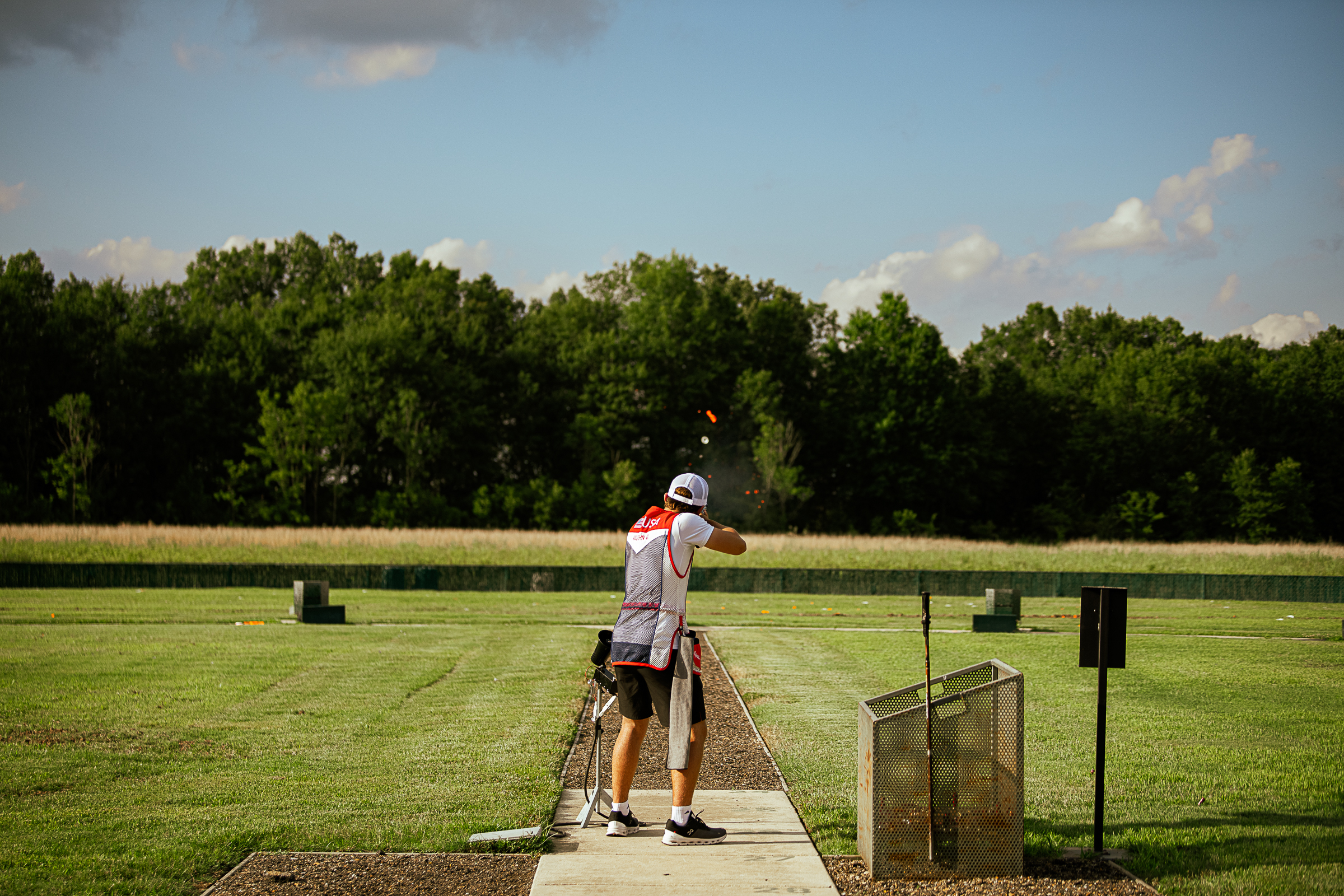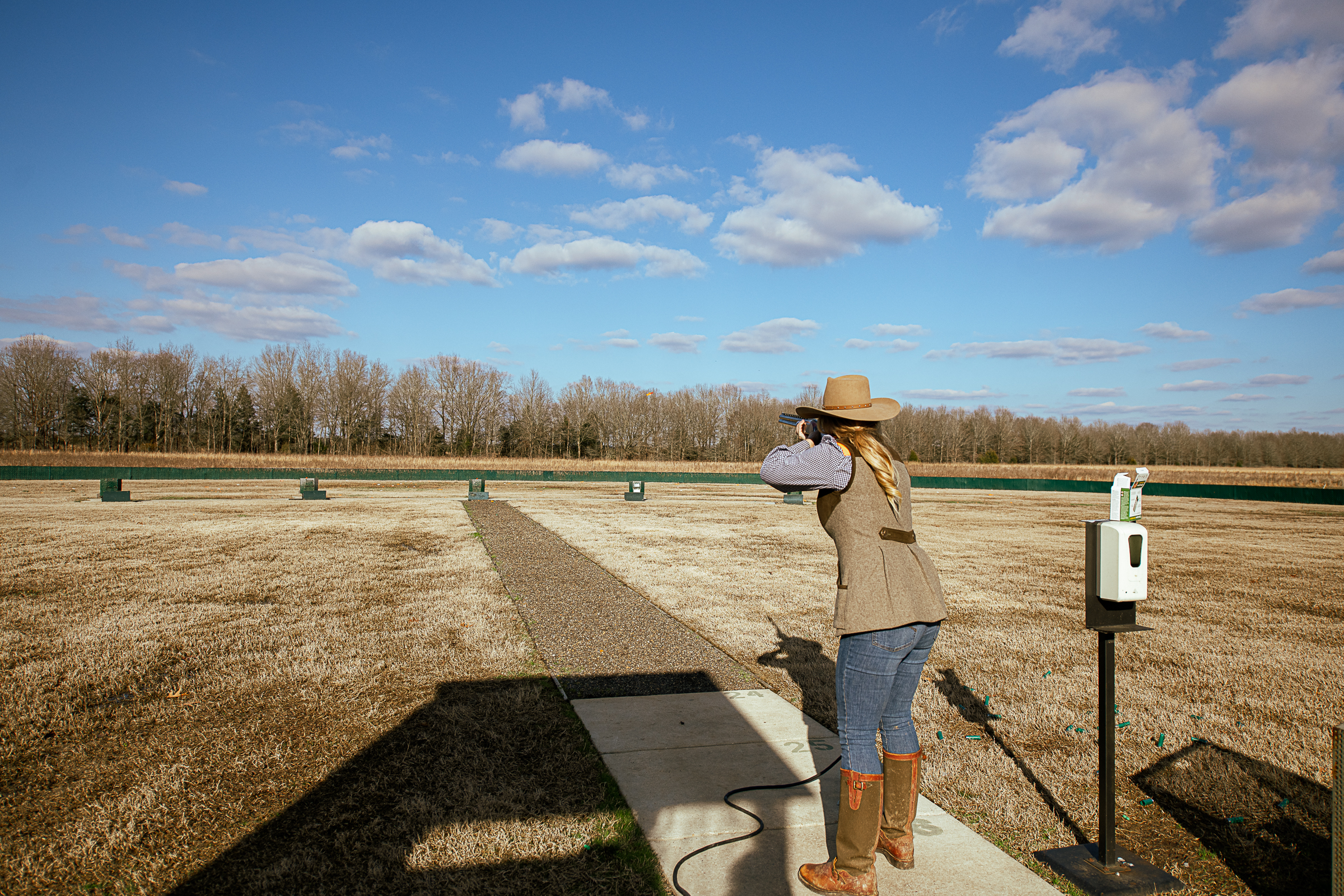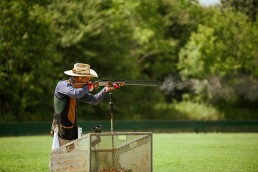The Ultimate Wingshooting Practice
SHARE THIS POST
Technology has always crept into the outdoors over time, but never like the past 20 years. I still remember when clay pigeon throwers had a pull rope to launch the bird, and you had to manually cock them. Then along came more modern technology that took skeet and trap to the next level. Sometime after that, I recall hearing about a thing called sporting clays where there were multiple stations with multiple machines, and you got a different shot at each station. After my first humbling round of sporting clays, I was like, “Wow,” this must be the most realistic way to improve your wing shooting.
As the machines got better, the courses got harder, and we could not imagine a better way to improve your real-world wing shooting skill set. It was as if we had reached the pinnacle of wing shooting practice. Then somewhere along this journey to chase birds around the world, I came across a Helice field. That day changed the way I approached wing shooting practice forever.

The sport of Helice originated in Belgium at some point in the 1960s, mainly as a substitute for shooting live birds. Even though Helice is considered a part of the clay target sports, there are no clay targets. The term “Helice” means rotating propeller, hence the shape of the assembled target and their propensity to fly extremely erratic.
The targets are two pieces of plastic. One is a set of “wings” and the other is the cap. For a shot to be counted, the two pieces must separate, and the center cap must fall inside the Helice field. Due to the wings, the target flies as close to a live bird as you can get. Even when the same target launches twice in a row, the shooter can’t predict the path it will take. This is due in part to the speed at which the target is launched.
The launcher spins the target at around 5000 RPMs prior to release. The release mechanism is like trap in that a speaker is placed at the shooter’s station. The shooter simply has the say “pull,” or anything for that matter, to launch a target.
Are you enjoying this post?
You can be among the first to get the latest info on where to go, what to use and how to use it!
In trap, there is a single machine, so a shooter has a starting point from where the target will come from. In Helice, there are 5 launchers in a row, placed 5 meters apart. Once the shooter says pull, a computer randomly releases a single bird from one of the five launchers. The Fence is 21 meters past the launchers, and the witness cap portion of the target must fall within the fence to score a hit. This is an extremely fast sport, and that’s what stumps most new shooters.
If you ever wanted to truly learn what instinctive shooting means, a Helice field will be your instructor. Many good sporting clay shooters struggle with Helice because there are no breakpoints or hold points. The multiple launchers and erratic flight make this sport the current ultimate challenge with a shotgun.

In Helice, a round is called a “race” and consists of 30 target presentations. Each presentation is allowed two shots. The race is fast, and getting a second shot off is, at times, a serious challenge. A race is broken down into five sections that are called “cranks.” A crank is five target presentations, or up to 10 shots. You rotate out after you crank 6 times to complete a race.
Most shooters prefer over and under shotguns simply for the ease and reliability of a second shot. Plus, there is the fact a shooter can only load two shells per presentation. Helice is generally a 12-gauge game when it comes to competition shooting. However, this can be shot with any gauge as practice for upland bird hunting. I have personally had great training sessions using my Beretta 686 in 28-gauge. (There is a whole story in the ballistics of a 28- versus a 12-gauge)
The sport of Helice is sanctioned through FITASC and there is a world championship held every year. The team is selected based on performance at several qualifying events held throughout the year. Most of your great shooters are from the southern United States, only because that is where the lion’s share of the Helice Fields are currently located. You can find a list of Helice fields on the United States Helice Association website. If you want a true challenge and a fabulous time, give Helice a try!
MWO
SHARE THIS POST
Did you enjoy this post?
You can be among the first to get the latest info on where to go, what to use and how to use it!
Troy Basso
Troy Basso is a freelance outdoor writer and photographer from Tennessee. He may be reached though his website at troybassooutdoors.com.



